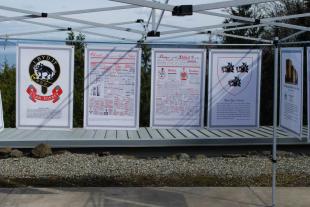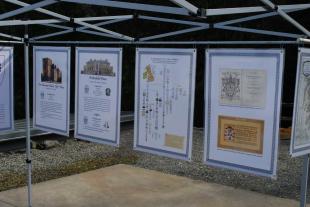Clan Badge: a Boar Passant Sable, Armed Argent and Langued Gules
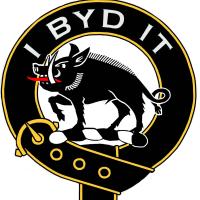
A boar passant Sable - refers to a boar walking as a symbol of bravery who fights to the death; Sable meaning black and Armed is a term applied to the horns, teeth, and tusks of beasts; and Argent refers to the head. Langued is a term to express the tongue of beasts when of a different tincture or color to that of the body. The tongue, when red, need not be expressed, as it is always understood to be of that color, and Gules refers to the color red.
The meaning of I Byd It or I Byde It: I shall endure or I shall preserve. This family motto seems appropriate since several of our ancestors in Scotland were executed for religious treason to the King. They and their families were hunted and persecuted by the King's forces until they were put to death in Glasgow and Edinburgh in the 1680's. The most famous was John, the martyr, Nisbet, whose execution location has been marked with a memorial bronze marker on the sidewalk in Glasgow. Nisbet streets still exist in both cities.
Scottish clans (from Scottish Gaelic clann, "children"), give a sense of identity and shared descent to people in Scotland and to their relations throughout the world with a formal structure of Clan Chiefs officially registered with the court of the Lord Lyon, King of Arms, which controls the heraldry and Coat of Arms. Each clan has its own tartan patterns, usually dating to the 19th century, and members of the clan may wear kilts, skirts, sashes, ties, scarves, or other items of clothing made of the appropriate tartan as a badge of membership and as a uniform where appropriate. Clans identify with geographical areas originally controlled by the Chiefs, usually with an ancestral castle or manor, and clan gatherings form a regular part of the social scene.
The word clann in Gaelic means children of the family. Each clan was a large group of related people, theoretically an extended family, supposedly descended from one progenitor and all owing allegiance to the patriarchal clan chief. It also included a large group of loosely-related septs - related families - all of whom looked to the clan chief as their head and their protector.
Clan Nisbet Tartan
According to the Scottish Tartans Society this is the sett that appears in the Vestiarium Scoticum as Mackintosh. There is no connection between the names, historically, to explain the position, and it is interesting to note the similarity with the Dunbar tartan which also originates in the Vestiarium.
Given that use of tartan in lowland families appears to be a nineteenth century innovation, the Nisbet tartan may be of recent origin. A tartan manufacturer may have taken the Dunbar family tartan as a model owing to the close relationship between the two families.
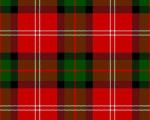
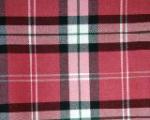
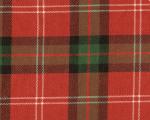
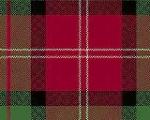
Spelling Variations
Naisbet, Naibett, Naiset, Naisbett, Naisbit, Naisbitt, Nesbet, Nesbet, Nesbett, Nesbit,Nesbith, Nesbitishill, Nesbitt Nesbutt, Nesyt, Nesbyte, nesbyth, Nesbythe, Nes-Dret, Nesebite, Neebith, Nesebyte,Nessbitt, Nezebuth, Nesbert, Nisbet, Nesbett, Nisbit, Nisbitt, Nisbythe, Nyspet, Nispitt, Nysbett, Nysit
There are no Sept's of Clan Nisbet. Just the spelling variations of the last name.

Badges
Chiefs
Heads of large branches of a Clan, who have been Officially Recognized as Chiefs by the Lord Lyon King of Arms. They may wear either their own personal Crest within a plain circlet inscribed with the Motto, as for a Chief, but with two small eagle's feathers instead of the Chief's three. If the Chieftain is also a Peer, he may add the appropriate coronet of rank on top of the circlet, or they may wear their Chiefs Crest badge without feather like any other clansman, as described for clansmen below.
Armigers
A person who has registered his or her own Coat of Arms and Crest, or inherited these according to the Laws of Arms in Scotland from an ancestor who had recorded them in the Lyon Register, may wear their own Crest as a badge: either on its Wreath, Crest Coronet or Chapeau, or as is more usual, within a plain circlet inscribed with his Motto.
An armiger may also choose to wear instead the Crest badge of his Chief if the armiger is a clansman. An armiger is entitled to one silver eagle's feather behind the plain circlet, and if he is also a Peer he may add his appropriate coronet of rank on top of the circlet.
Clanspersons
These are the Chiefs relatives, including his own immediate family and even his eldest son, and all members of the extended family called the "Clan", whether bearing the Clan surname or that of one of its septs; that is all those who profess allegiance to that Chief and wish to demonstrate their association with the Clan.
It is correct for these people to wear their Chief's Crest encircled with a strap and buckle bearing their Chief's Motto or Slogan. The strap and buckle is the sign of the clansman, and he demonstrates his membership of his Chief's Clan by wearing his Chief's Crest within it.
Clan Nisbet Badges














Clan Chief's Pinsel

This is the flag denoting a person to whom a Clan Chief has delegated authority for a particular occasion, such as a Clan Gathering when the Chief is absent, in a word, the flag of the Chief's representative. It is triangular in shape, 60 centimetres high at the hoist and 135 centimetres in width tapering to a point, with a background of the main livery colour of the Chief's arms. On it is shown the Chief's crest, within a strap of the second livery colour and buckle (gold for full Chiefs), bearing the motto, and outside the strap and buckle a gold circlet (outlined in green if the background is not a contrasting colour to gold) inscribed with the Chief's title. On top of this circlet is set the owner's coronet of rank or his baronial cap. In the fly is shown the owner's plant badge and a scroll inscribed with his slogan or motto. This flag is allotted only to Chiefs or very special Chieftain-Barons for practical use, and only upon the specific authority of the Lord Lyon King of Arms.
The Heraldic definition of the Clan Chief's pinsel:
Pinsel four feet by two feet six inches Argent displaying on a wreath liveries Argent and Sable the foresaid crest with in a strap Sable, buckle and embellished Or, inscribed with this Motto "I Byd It" in the letters of the field all within a circlet Gules fimbrated Or, bearing his title "Nisbet of That Ilk" in letters also in the Field, and the same ensigned of a chapeau Assured furred Ermine, and in the fly an Eschol Sable surrounding a sprig of oak furcated Proper bearing in letters of the field this slogan "A Nisbet".
Tent Graphics
Printable graphics for Clan Tents. These PDFs can be printed and hung in your tent and are optimized for a 22" x 34" format.
- Alexander System of Heraldry
- Archerfield House
- Big House
- Clan Badge
- Craigintinnie House
- Dean House
- Dowling Pedigree 1
- Dowling Pedigree 2
- Environs of the Early Nisbets
- Horatio Nelson
- Nisbet Pedigree
- Sir John's House
- They Died for Their King...
- Three Boar's Heads

